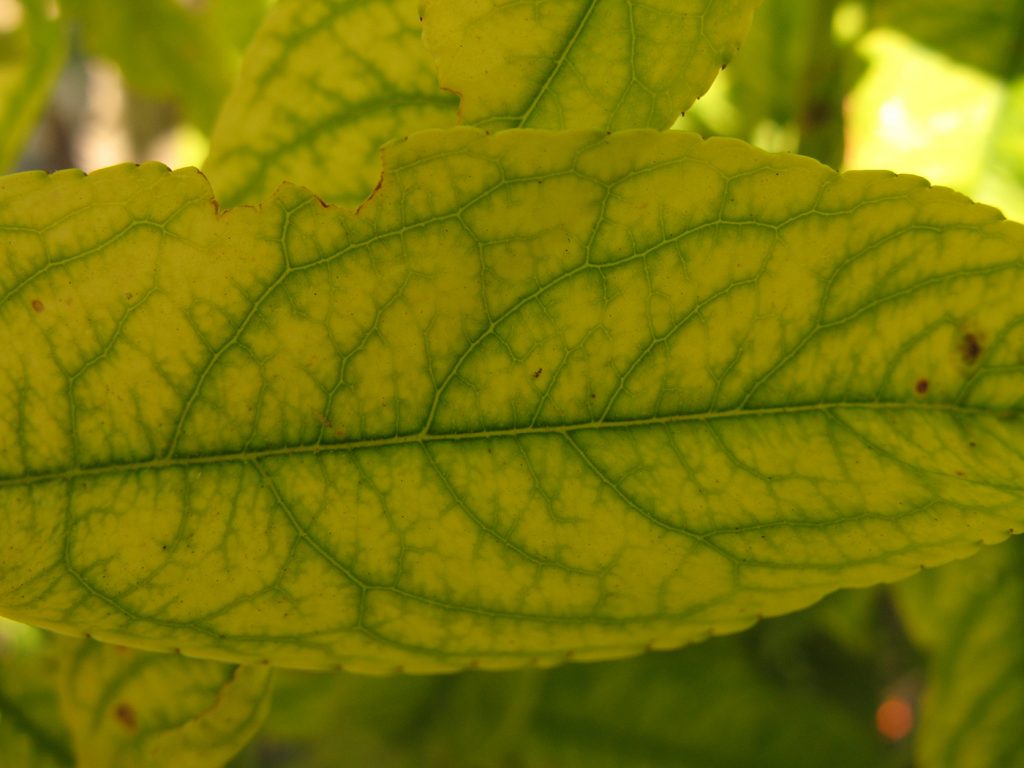
Do you want healthier plants, or looking to help your plants grow? Different plants require different soil and organic matter to stimulate growth. Read on to discover how making soil acidic can help acid-loving plants and trees grow better.
How to determine pH
Soils mineral content differs according to local geology, and these variations affect the relative acidity or alkalinity of the soil- a level measured by the ph scale. As you may (or may not) remember from school, the pH scale ranges from 0 to 14, with seven representing a neutral ph level. Lower pH numbers mean more acidic soil; higher numbers mean more alkaline soil. A soil pH of 5.5. is ten times more acidic than a soil pH of 6.5.
Conversely, a pH of 8.5 is ten times more alkaline than 7.5. Proper pH levels are vital for a plant's potential to take up the nutrients it needs from the soil. A soil pH test kit from StataGreen will help you determine the pH of your soil and if you need to make your soil more acidic or require alkaline soil.
Why increase soil acidity & soil pH?

Most Australian plants prefer slightly acidic soil, with a soil pH of 5 to 6,5. Native Australian plants have evolved in isolation, some in arid, somewhat inhospitable conditions.
Many plants, shrubs and most vegetables require acidic soil to thrive. Examples of acid-loving plants, shrubs and flowers include:
Plants/Shrubs:
- Agapanthus
- Callistemon (Bottlebrush)
- Camellia
- Dianella (Flax Lilly)
- Grevillea
- Liriope (Lily Turf)
- Lomandra (Mat Rush)
- Syzgium (Lillypilly)
- Westringia (Aussie Box)
- Zoysia (No Mow)
Trees:
- Acacia (Wattle)
- Araucaria (Bunya or Hoop Pine)
- Banksia
- Brachychiton (Flame Tree)
- Cupaniopsis (Tuckeroo)
- Macadamia
Flowers:
- All Annual species
- Anigozanthus (Kangaroo Paw)
- Crowea (Waxflower)
- Roses
- Telopea (Waratah)
- Tulips
Risks of Imported Soil

When planting a new shrub or tree, you must consider what soil type your plants need to thrive. Do you require slightly alkaline soils with a high pH level or more acidic soils? How much sulphur does your soil require? How do you make the soil more acidic?
Reconsider using imported soil
Did you know that any locally imported soil will likely be out of the typical "optimum" range for soil pH, organic material or phosphorus? Using the wrong soil for your garden planting area can damage new and existing plants. For example, soil with a high ammonium sulphate level can quickly burn plants if not used correctly, and iron sulphate should not be used regularly as heavy metals accumulate in the soil, becoming harmful to other plants.
Your landscape designer or architect will be aware of these environments and must decide which plants to choose, the location and the soil amendments accordingly. A specialist can provide soil advice, such as the soil's pH level when changing the specification to suit specific plant types. Soil conditioners mixed into the ground will help kickstart plant growth and increase the tree survival by providing needed plant nutrients and water retention.
How do plants show they need more acidic soil?

Plants that require more acidic soil to thrive will often show this by developing a deficiency called iron chlorosis. It causes the leaves to turn yellow. Further signs include stunted growth, leaves' brown spots, and leaf tip burn. If this happens to your plants, they may need a soil amendment that you can add to the soil to adjust the acidity levels. A range of soil amendments and acidifying fertilizers such as ammonium sulphate, sulphur coated urea, and ammonium nitrate can help plants that need more acidic soil. They can be used on large garden areas, raised beds, around trees and shrubs and other existing plants. However, before you apply any soil amendment such as organic mulches or aluminium sulphate, we recommend testing your soil with a soil test kit to determine the required soil types and amounts of product.
How to change pH
Generally speaking, though, to change soil pH or reach the desired pH level for your soil, you can apply the following ameliorants: to raise pH – hydrated lime or dolomite, to lower the pH or acidity – elemental sulphur, iron sulphate, sphagnum peat moss (a good source of organic matter), aluminium sulphate or sulfuric acid. Granular sulphur is also a less expensive, safe but slow-acting product able to lower your soil's pH, mainly used by large scale growers.
StrataGreen offers a wide range of soil improvement, soil tests and corrective elements perfect for making the soil more acidic and helping to improve your soil to assist with the growth of most plants.
Liquid products are boosters for fruits and flowers; high potassium improves fruits and vegetables' size, colour, and quality. Zinc & Manganese are the most required trace elements for citrus trees and vines. A regular application of Manutec Zinc and Manganese will maintain healthy growth for specific plants. Manutec garden lofe increases soil pH to neutral. It further improves drainage and aeration and can be used to enhance composting.
Soil Test Kits and Corrective Elements for Acidic and Alkaline Soil
Find out more about making the soil more acidic, how to achieve low and high pH levels and how to use soil corrective elements for optimal growth at StrataGreen. For large scale growers and garden centres, contact us to learn more about the soil corrective elements and solutions we offer.


